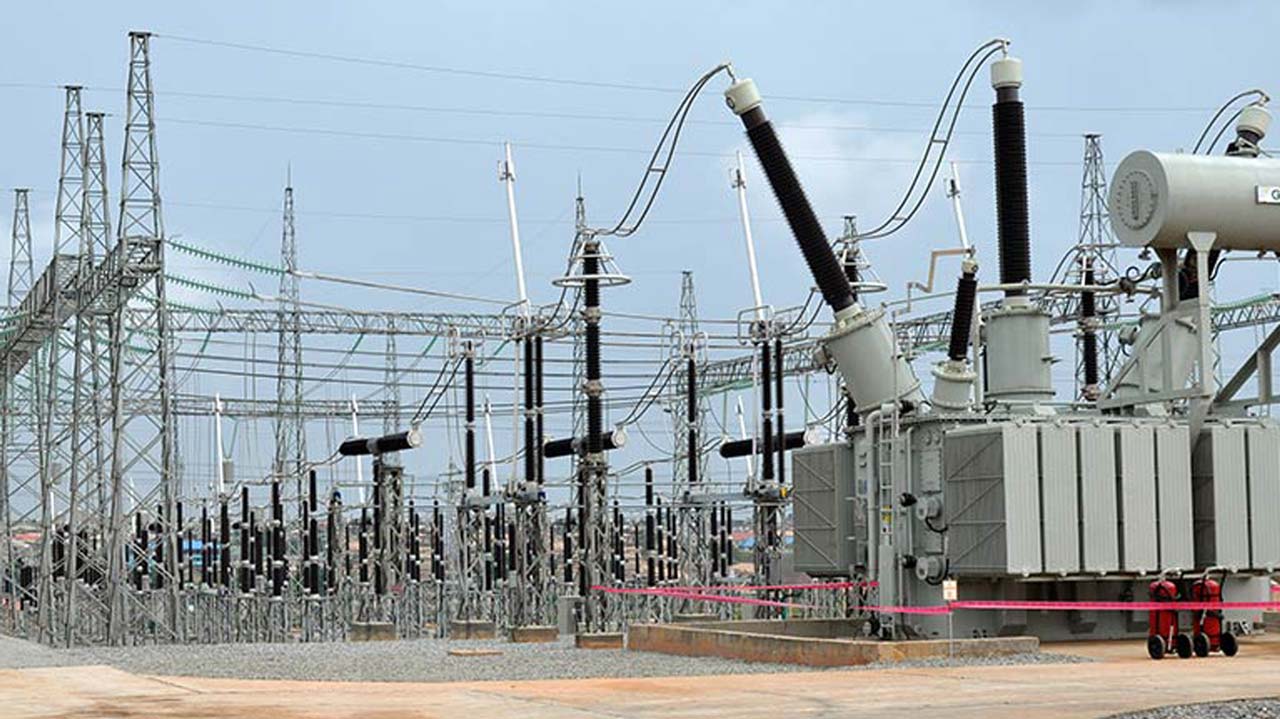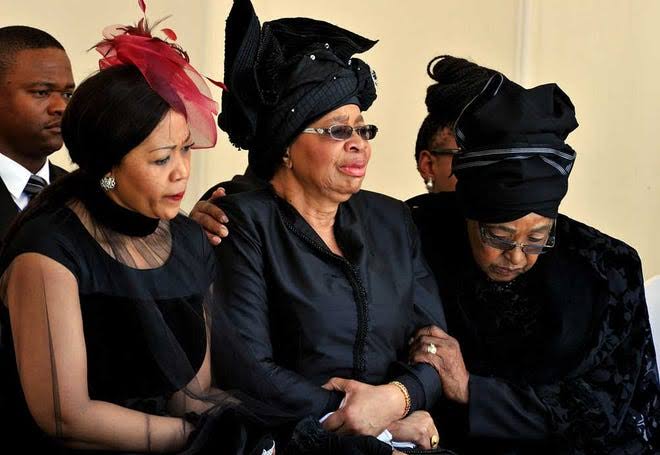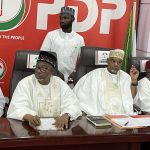At the heart of industrial development in every nation is a reliable power supply. It creates a lot of windows of opportunities for Micro, Small and Medium Enterprises (MSMEs) to thrive.
However, achieving this feat has continued to elude Nigeria, the largest country in West Africa, with a population of over 200 million and a large percentage of its economic activities being driven by MSMEs.
Join our WhatsApp ChannelMany years after independence, generation capacity hovers between 4,000 and 5,000 megawatts (MW) despite the 13,000MW installed capacity, 10 years after the country’s power sector was privatized. According to experts, each of the subsectors – generation, transmission and distribution – grapple with challenges such as poor infrastructure, electricity theft, vandalisation, inconsistent policies, weak regulation, dependence on fossil fuel for power generation, and lack of technical capacity.
As 2023 comes to a close, there are major issues that shaped the sector in the outgoing year as industry players project that if the policy decisions taken are implemented, the sector would improve significantly from 2024 onward.
Generation Capacity Wobbles
According to 2023 quarterly reports released by the Nigerian Electricity Regulatory Commission (NERC), the available generation capacity of all the power plants connected to the national grid witnessed a decline. The first quarter recorded 4,605.72MW; the second quarter, 4,387.91MW and the third quarter, 4,211.44MW. The Q3 2023 report indicated that the generation capacity dropped by 4.02 percent (76.47MW) from what was recorded in Q2 2023. According to the Q3 report, there were 27 grid-connected power plants consisting of 19 gas, four hydro, two steam, and two gas/steam-powered plants. It said the decline was due to reduced available generation capacity of some power plants connected to the national grid which developed mechanical faults at some point within the period under review.
Nigeria has recorded collapse of the national grid not less than three times this year and about seven times in 2022 with each throwing a substantial part of the country into darkness as the Transmission Company of Nigeria (TCN) kept promising to resolve the situation. Two of the grid collapse incidences were recorded in Q3.
READ ALSO: Power: Nigerians In Dilemma Of National Grid Collapse And High Fuel Cost
Also, the activities of vandals who damage power infrastructure contributed to power failure. Last week, TCN’s Gombe-Damaturu 330kv transmission line around Katsaita village in Yobe State was vandalised with explosives by suspected terrorists throwing many parts of Northeast into blackout. To eliminate vandalism and theft of power equipment by criminals, TCN has announced plans to intensify surveillance of its power lines and substations by deploying drones, cameras, and other advanced equipment.
Rise in Energy Costs
Due to epileptic power supply Nigerians and businesses have over the years resorted to alternative means of generating electricity to drive their activities.
With many using diesel and gasoline generating sets, costs of energy, according to reports, have continued to rise. Organised Private Sector players had at different times lamented about high energy costs. For instance, manufacturers spent N117.38 billion in 2017 on energy, N93.11 billion in 2018, N61.38 billion in 2019, N81.91 billion in 2020, N71.22 billion in 2021 and N144.3 billion in 2022. With the removal of subsidies on Premium Motor Spirit (PMS) commonly known as petrol which led to a hike in the price of the commodity coupled with the rising cost of diesel, and other things across the country, data for 2023 might surpass the previous figures.
Economic experts have also at different times in the year raised concerns about the impact of rising energy costs on production, the general cost of things and the survival of businesses.
In March 2023 when the National Bureau of Statistics (NBS) reported that Nigeria’s inflation rate had increased to 22.04%, KPMG, a professional service firm predicted a further rise in energy costs because inflation and energy costs have a link.
The financial statements of some top firms operating in the country revealed a significant increase in the first half of 2023. Many companies are shutting down every year due to high operating costs which the energy component contributes significantly to.
Electricity Act 2023: a Game Changer?
President Bola Ahmed Tinubu on 9 June 2023 signed into law the Electricity Act. The Act contains far-reaching provisions part of which encourages the participation of states and private entities in power generation and distribution across the the country. The new legal framework provides for a holistic, integrated resource plan that compels the utilisation of different modes in the energy mix including renewable and nonrenewable sources for power supply across the country and also attracts investments into the sector.
In a nutshell, the Act provides for the decentralisation of the power sector and the creation of state electricity markets.
The provision was backed by the constitutional amendment in March 2023 which granted states the legislative autonomy to regulate electricity activities within their jurisdiction, while the Federal Government regulates interstate and international electricity activities.
Sections 2(2), 63(1), 230(2-9) of the Electricity Act 2023, allow states to create their electricity markets, and establish regulatory boards to manage electricity activities within their jurisdiction.
Experts hailed the passage of the law with the hope that effective implementation of the provisions would bring about transformative development in the Nigeria Electricity Supply Industry (NESI) by improving energy access, delivery, and supply of electricity to the people within a state. They also expressed optimism that it would help to effectively capture the unserved and underserved areas in the states.
Highlighting the significance of the EA 2023, two legal experts at Farmville law firm, Dayo Adu and Samuel Olawepo in an article published on the Mondaq platform said the state electricity markets would “create smaller regulatory space that will enhance flexibility, accountability, and transparency than when a single regulator was responsible for the entire country.”
“Through this development, States can explore innovative mechanisms to attract investment for large-scale projects, such as concessionary-based project arrangements or Private Public Partnerships (PPPs) for projects in the state and other viable financing options.”
They also explained that the Act enables states to tackle supply deficit “by exploring innovative energy mix solutions. States can diversify the generation mix by using the abundant renewable energy resources domiciled in their respective jurisdictions to meet their energy needs.
“This new regime of state electricity market gives States a unique opportunity and flexibility to address the perennial challenges affecting optimal electricity supply within their respective jurisdictions without waiting for the federal government’s leading,” the legal experts stated.
Quest to Increase Power Generation and Transmission Capacity
Minister of Power, Adebayo Adelabu, had in September disclosed that the Nigerian government is working towards generating 20,000MW by 2026 and 60,000W of electricity by 2060.
Adelabu, who revealed that the ministry has set short and long-term plans to achieve the target noted that it was not an ambitious plan but can easily be achieved. He also indicated that two more power substations would be built in the next few months, through the presidential power initiative of the federal government.
Experts have continued to bemoan Nigeria’s low generation capacity as it stagnates industrial growth. In a media interview in 2020, Kola Adesina, who was then chairman of Ikeja Electric said the country needs to be producing about 50,000mw of electricity every day to meet its demand gap.
Egypt in North Africa has an installed electricity generation capacity of approximately 58,000MW making it one of the highest in Africa, with 100 per cent access for a population of about 80 million people. Similarly, South Africa, with a population of approximately 61.4 million (far less than Nigeria), has a total domestic electricity generation capacity of 58,095 from all sources, as indicated by the country’s Ministry of Mineral Resources and Energy.
While addressing a joint session of the Senate and House of Representatives Committees on Power, the Minister of Power announced that the Zungeru hydropower plant, with a capacity of 700MW, is 99 per cent ready for operations and is hoped to boost power supply in the country.
“The hydropower plant is 99.8% ready. It is almost completed, and we intend to start operation this year and commence evacuation to the national grid. Immediately concessionary fees are paid, and we will start full operation. So, we don’t have a problem with Zungeru,” the minister had stated.
On the controversial Mambila Hydroelectric Power project, Adelabu said no fund was allocated to it in the 2024 budget because of lingering legal disputes. “For Mambila, there is no provision for it in 2024. It isn’t a mistake. It is deliberate. It is under international arbitration. Until it is resolved, we can’t do anything about it,” Adelabu stated.
The hydropower project estimated to add about 3,000MW to the national grid when completed in 20230 has continued to suffer a series of setbacks in its construction take-off 50 years after it was first conceived. Some analysts said the circumstances surrounding the implementation of the project reflect the inconsistency by successive administrations in seeing through essential national infrastructure.
Investment in Power Sector
As the country desires to improve power supply, there is a need for substantial investment in the sector. During the recently concluded United Nations Climate Change Summit, COP28 in Dubai, the Governments of Nigeria and Germany signed the Presidential Power Initiative agreement designed to inject 12,000MW of electricity into the national grid. Managing Director of the Federal Government of Nigeria Power Company, Kenny Anuwe and the Managing Director (Africa), Siemens AG, Nadja Haakansson, signed the agreement which was presided over by President Bola Tinubu of Nigeria and German Chancellor, Olaf Scholz, on the sidelines of the summit.
The Minister of Power said the agreement would help in “grid stabilization of the entire transmission grid in the Nigerian power sector, which will eventually improve the power supply in terms of regularity, in terms of functionality and in terms of affordability in the years to come.”
Nigeria had signed such an agreement with Siemens under President Muhammadu Buhari in 2018. however, experts averred that achieving success with the agreement lies in having good political will to shed off hurdles brought about by governance problems emanating from prior administrations in the sector. This was corroborated by the German Chancellor while responding to Tinubu during a discussion on investment in rail and power infrastructure on the sidelines of the G20 Compact With Africa Conference in Berlin.
“Of course, this has to do with the need for a provision of stations and infrastructure on the grid. Siemens has developed the plan and is ready to deepen implementation, but it is now up to your new government to take the follow-up action that you are now committed to taking,” Scholz had said.
During a media interview, a former chairman of NERC, Dr Sam Amadi, had while speaking on why the previous Siemens agreement with the Nigerian government for power sector improvement was not successful like they did in Egypt, said the reason was because the condition they met in the country didn’t allow them to work as they should. He maintained that the government could get technocrats from anywhere but can only achieve good results when public sector institutions are ready to do the right thing.
“The private sector is great, but it relies on the public sector that is first reformed and not corrupt but focused.
“Yes, you can get Siemens to work here. Siemens will work according to your public sector setup… The public sector government must first work before the private sector work,” Amadi said.
The Cost-reflective Tariff versus Electricity Subsidy Debate
Another issue that gained attention in Nigeria’s electricity sector in 2023 was the debate about removing subsidies on electricity to adopt a cost-reflective tariff policy.
However, the President Tinubu-led administration hinted at not removing it yet as the citizens were yet to overcome the effect of the petrol subsidy removal done at the inception of the regime on May 29.
Speaking on this, the Minister of Power had at a press briefing said: “You cannot jump overnight and implement the cost reflective tariff I can tell you that till today, the government still subsidises power. For political reasons and empathy, you cannot cause additional burden on Nigerians.”
However, those making a case for the country to adopt a cost-reflective tariff policy have cited huge government spending in subsidizing the cost of electricity. There are also concerns that the citizens seem not to feel the impact of the electricity subsidy. According to Q3 2023 NERC report, the Federal Government incurred a subsidy obligation of N204.59 billion within the period. This was a 51.3 per cent increase from N135.23 billion paid to subsidise electricity consumption in the second quarter (between April and June this year). The Q1 NERC report indicated that N36 billion was paid for subsidy, giving a total of N375.82 billion for three quarters.
The NERC Chairman/CEO, Sanusi Garba, said Nigeria spent N2 trillion on electricity subsidy between 2015 and 2022 projected N600 billion for 2023 and N1.6 trillion for 2024.
In an attempt to address the liquidity crisis in Nigeria’s power sector, NERC had in 2020, introduced a Service-based Tariff (SBF) in which the 11 electricity distribution companies (DisCos) charge customers based on the quantity of power supplied to them. Residential and commercial customers were divided into bands, to pay tariffs depending on the number of hours of electricity that they enjoy. Going by the plan, the tariff was expected to be adjusted twice yearly until the subsidy is phased out of the sector.
The NERC was expected to upwardly review electricity tariffs in July given the surging inflation and high foreign exchange rates due to the floating of the naira. However, it didn’t happen because of what analysts said was due to political intervention to save the new government from further negative reactions from citizens who were grappling with the effect of the petrol subsidy removal done not up to two months at the time. This could explain why the country recorded the N135.23 billion subsidy in the second quarter of 2023.
During a programme organised by stakeholders in the power sector tagged, “NESI privatisation and its 10-year milestone: The Journey So Far, Opportunities And Prospects,” President Bola Tinubu noted that cost reflective tariff was the best way forward in the sector.
The president who was represented at the event by the special adviser on Energy and infrastructure, Office of the Vice President, Sodiq Wanka, stated that as of Q2 2023, for every kWh of electricity wheeled to the national grid, only 60 per cent of it was paid for.
However, he explained that even the electricity tariff paid for, is “far from being cost-reflective, especially in light of the recent devaluation of the Naira.”
“The sector has suffered from chronic underinvestment, especially in transmission and distribution. Many of the successor utilities of the PHCN have failed to meet their performance improvement targets due to technical and financial capacity issues,” he lamented.
The NERC Q3 report also revealed that international electricity customers failed to remit US$16.11 million to the market operator in the first quarter of 2023. This also happens in the home front. The Commission lamented that the non-payment by customers is a perennial issue in the NESI and will continue to impact the liquidity of the industry if not addressed definitively.
Apart from the debate about adopting cost-reflective tariffs as a leeway to improve liquidity challenges in the nation’s power sector, the issue of debt and metering gap also needs to be addressed. Chairman/CEO, Mojec Meters Limited, Chantelle Abdul, said there are seven million customers without meters and three million with old meters that need to be replaced. He added that Nigeria would need about N1.5 billion to bridge the existing metering gap.
Victor Ezeja is a passionate journalist with seven years of experience writing on economy, politics and energy. He holds a Master's degree in Mass Communication.


















Follow Us